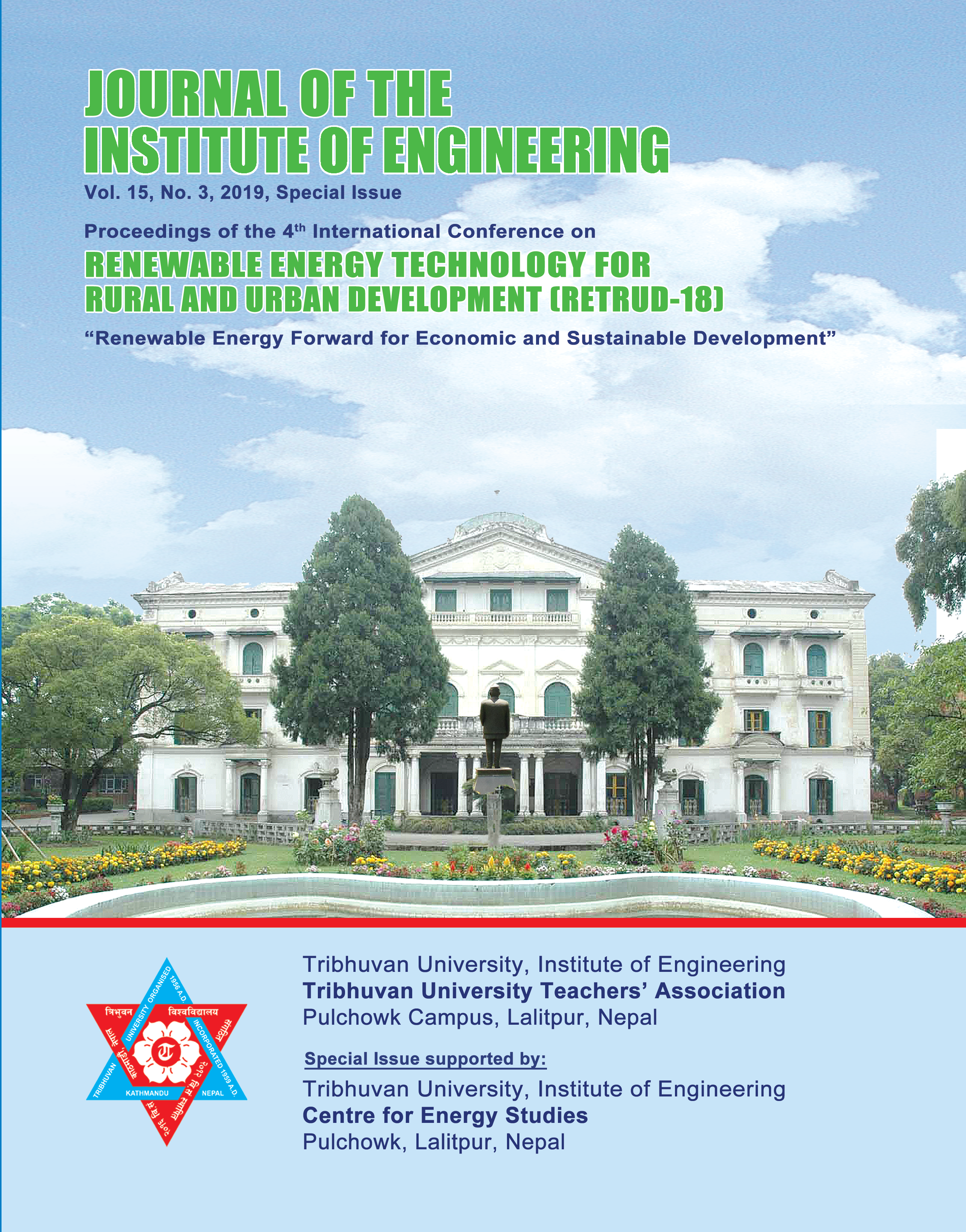Thermal Performance of Nepalese Building- A Case Study of Dhulikhel and Biratnagar
DOI:
https://doi.org/10.3126/jie.v15i3.32012Keywords:
Thermal Comfort, Building Design Code, Indoor climateAbstract
Nepal has wide variation in altitude, so does its climate, lifestyle and housing. The building design code issued by the Government of Nepal does not address the issue of thermal comfort, which could be the reason the modern buildings built under the design code are performing poorly in terms of indoor thermal comfort. As a result, people have largely compromised in accommodation. The research includes selection of two representative buildings (at Biratnagar and Dhulikhel) followed by real time monitoring of indoor climate (temperature and Relative humidity). The logged data was used to calibrate the computer model. The model was approximated to real scenario including indoor heat loads from people, lighting, electric equipment and infiltration. Building energy modeling was done in EnergyPlus. The research work depicts the thermal performance of building by comparing the indoor climate of selected buildings of Biratnagar and Dhulikhel with the ASHARE suggested thermal comfort level for humans. The major problem found in the buildings of Biratnagar was overheating for more than 6 months period while for Dhulikhel was under heating for more than 4 months period. The author suggests further research to analyze passive techniques to improve thermal performance and reduce active energy consumption.
Downloads
Downloads
Published
How to Cite
Issue
Section
License
The Copyright is held by Journal of the Institute of Engineering, IOE, TU




